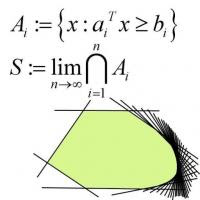- What kind of housing comfortably houses 1 person? What kind of housing comfortably houses 2 people? What kind of housing comfortably houses 2+1? And 2+2? How about 2+3? Is 2+4 even advisable given it is public housing?
Suppose we add 2 shoebox variants, 2rm+, 3rm+, 4rm+, actual 5rm+ for a new total of 11 flat types. Taking the shoeboxes out (shoeboxes relate more to "lifestyle choice" than "income"), we have 8 flat types that allows for better pegging to income level due to less "sandwiching".
Now there is a new problem of how to handle balloting since the number of flats per type becomes much smaller. It is no longer practical to ask for applicants to indicate only a single flat type. The reality is, it probably is more sensible to ask applicants to indicate 2 to 4 choices (in the same development) in order of preference. How to implement the balloting process now becomes the problem.
Given a few ballot orders and the preferences of balloters, how do we allocate flats well. Can we obtain an allocation where no two balloters would be willing to perform mutual swaps of numbers for one or more of their choices? (The "no-envy" condition.)
Let me describe a simple process that provides a result that satisfies that "no-envy" condition.
- Balloters get numbers for all the flats types that they have indicated a preference for. (Recall these are in the same development.)
- Pairs of balloters are compared in a random order to make them happier by mutual swaps of their ballot numbers. At the end of this process, the "no envy" condition will be satisfied.
(If there are theoretical questions on the resulting ballot numbers I think I can answer them. Like given a set of ballot orders and preferences, is the "no envy" allocation generated from this random process unique? The answer to that one is no due to the random comparison order. So it is not "optimal" in a sense, though "optimal" is hard to quantify rigorously due to the number of conflicting interests. We'll leave theory to another day, if there is interest.)
On the other hand, if it is desirable to pare down the number of appointments on paper, it can be done, but the algorithm I can think of is not so rigorous. (A better way is to incentivize people to give up the appointments they do not really need through a small price discount, say $500 per appointment dropped.)
In any event, it is not hard to give those balloting for flats more choices. Why can't someone's application read:
- Geylang (4 rm)
- Kallang (4 rm)
- Hougang (4 rm)




No comments:
Post a Comment